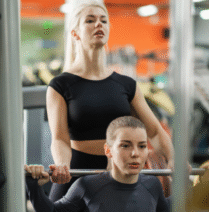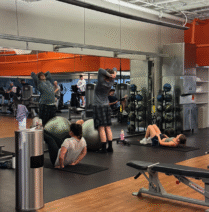
Fitness is not a one-size-fits-all. One of the most common goals our trainers hear is to get “fit.” While becoming “fit” seems to be the universal consensus as to why people seek personal training, there isn’t much consistency to the varying definitions of the word. Each meaning of the word comes from the various checklists encompassed by the individual’s personal goals and views of success. While these ideas stem from common groundings of expectations, health, and beauty standards, they can be as different as night and day. To achieve the best results for you, we must first understand the role of the types of muscle fibers in training.
Understanding Types of Muscle Fibers
Beyond the level of inconsistent definitions of “fit,” the fitness label varies on a deeper level – muscle deep if you will. The anatomy of a muscle consists of various fascicles of muscle fibers that differ between individuals based on activity and genetics. These fiber types are designed to make different types of activities easier for the body. Type II muscle fibers are utilized more for anaerobic, short-burst activities such as heavy lifting and sprinting, and Type I fibers are utilized for more endurance-based activities such as cross-country running and cycling. The number and size of these muscles vary between individuals and are as unique as their definition of fitness.
Individuals classified in the “fit” category generally have different trained fiber types, which makes them good at different types of training (cardio, weightlifting, balancing). As you make your body into something great for some sport or activity, you will not necessarily be conditioned for all-terrain. The example we like to use is between Arnold Schwarzenegger and Lance Armstrong. Both are considered stars in their sports, with almost opposite body types, and polar opposite muscle structure. Understanding the uniqueness of fiber types between individuals can help better define fitness-related goals, and utilize one’s own natural ability to reap the benefits of physical activity. For example, goals relating to overall heart health will focus on Type I fiber training to increase the longevity of activity to promote better air and blood flow to the body. For joint mobility and sustainability, training will focus on Type II to strengthen muscles and better equip the body to handle high impact. As personal trainers, it is our job to train with the individual in mind.
Do What’s Best for You
People will often try to lump everyone together and think everyone should look the same and train the same but the reality is that: just like how everyone’s health goals are different, so are the ways in which that will help you get there. Not everyone will need to eat for 3 and lift triple their body weight, and not everyone should limit their calories and run for miles a day.
Our knowledgeable fitness staff will determine what is the best course of action to achieve your individual definition of “fit.” Sign on today to work with Chicago’s best personal trainers at our Lincoln Park or Illinois Center locations!
References:
Wilson JM, Loenneke JP, Jo E, Wilson GJ, Zourdos MC, Kim JS. The effects of endurance, strength, and power training on muscle fiber type shifting. J Strength Cond Res. 2012 Jun;26(6):1724-9. doi: 10.1519/JSC.0b013e318234eb6f. PMID: 21912291.
Tags: chicago personal trainer, chicago personal training, fitness, fitness goals, personal trainer, personal training



